Peripheral Vascular Intervention
Click here to see the Case of the Month!
Symptoms Of PAD
Peripheral Vascular Disease (PVD or PAD) most often affects the legs, but can also occur in the arteries leading of the arms, head or internal organs. The most common signs and symptoms in the legs include:
- Leg pain in the calf or buttocks that worsens with exercise (“claudication”)
- Numbness or coldness of the legs or feet
- Discoloration of the skins or loss of hair on the legs or feet
- Weak or absent pulse in a limb
- Pain at rest or non-healing ulcers or gangrene on the toes, foot or heel (“critical limb ischemia”)
Arterial blockages may occur in the iliac arteries (vessel between the aorta and the femoral artery in the groin), femoro-popliteal arteries (between the groin and the knee) and/or in the tibial arteries (small vessels below the knee supplying blood flow to the feet).
Interventional Procedures
OHVI cardiologists use a wide variety of devices and techniques to clear severe blockages or even open totally blocked arteries. Many procedures utilize balloon angioplasty, sometimes with placement of metal mesh devices known as stents to provide a scaffolding to hold open the artery at the site of the occlusion. Many blockages in the femoro-popliteal and tibial arteries are treated first with atherectomy (plaque removal). Different types of atherectomy devices are used for different types of blockages.
Directional atherectomy (e.g. Medtronic SilverHawk™, TurboHawk™, HawkOne™) removes plaque by shaving it and collecting it in a nosecone for removal from the body. This device works much like a wood-planing tool. It comes in various sizes and can be used in arteries from the groin down to the foot.
Orbital atherectomy (e.g. CSI DiamondBack™, Boston Scientific Rotablator™) works like a “roto-rooter” device with a diamond chip coated burr or crown that rotates at 60,000 to 120,000 RPM to “sand down” highly calcified plaque.
Laser atherectomy (Spectranetics™, Eximo™) uses high-energy laser light beams emitted through glass fibers through a catheter aimed at the blockage literally vaporizing the plaque.
To minimize the risk of re-narrowing (“restenosis”) after interventional procedures, many vessels as a final step are treated with a drug-coated balloon angioplasty (DCB). The drug on the balloon is delivered into the vessel wall during a several minute inflation followed by removal of the balloon. This “anti-restenosis” drug can be used with or without stenting.
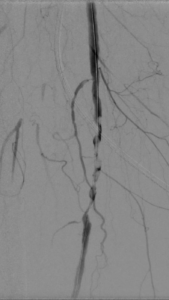
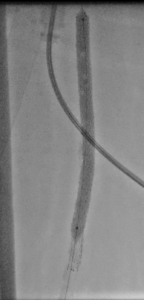
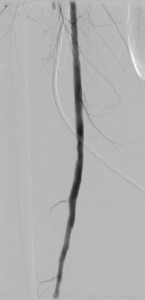
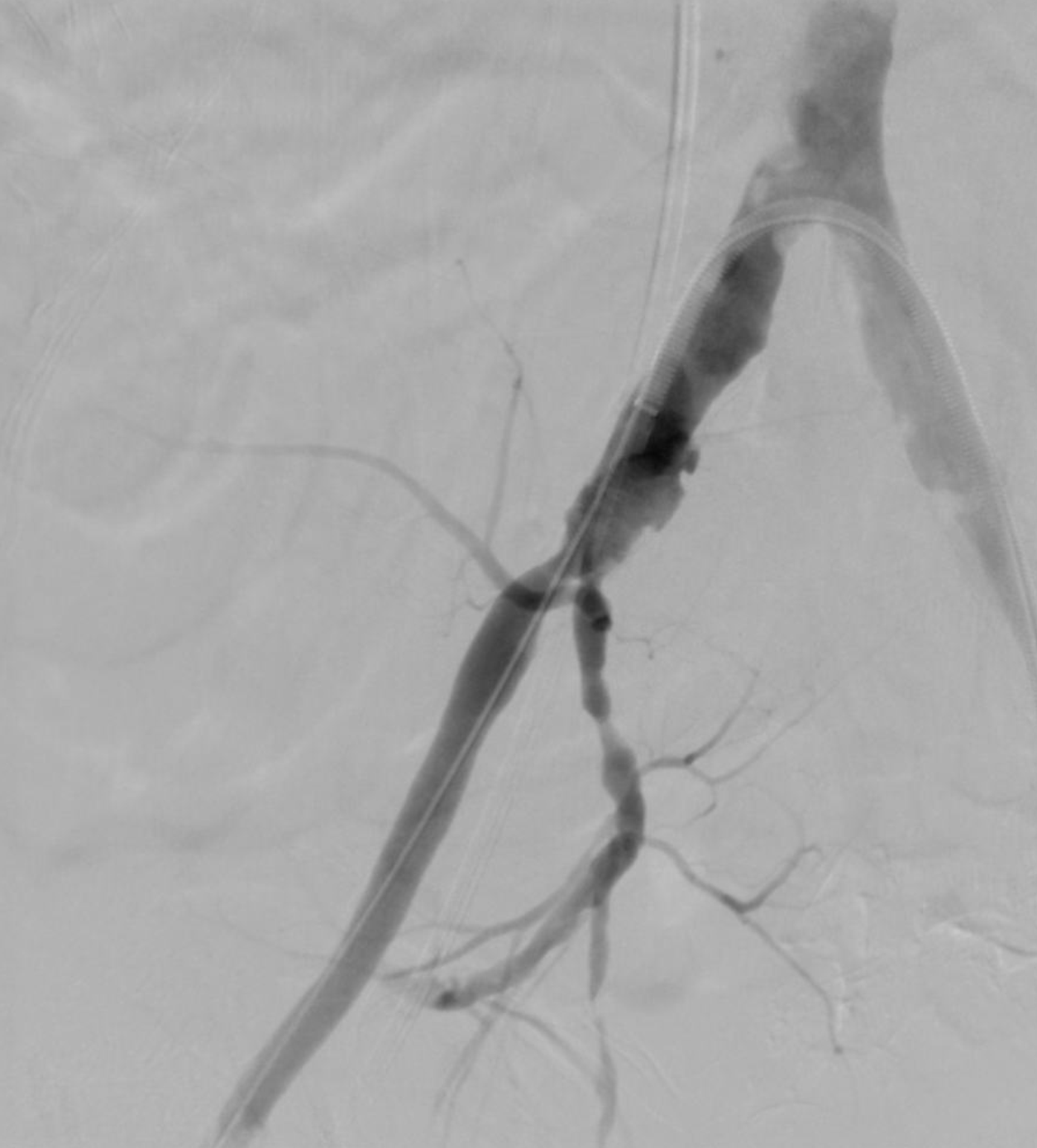
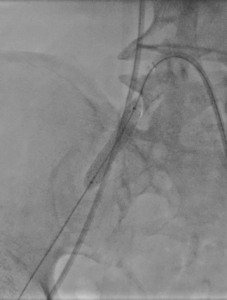
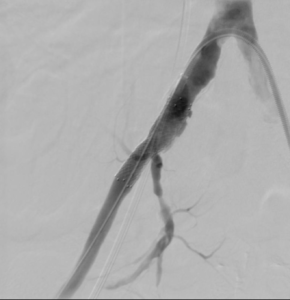
Risks of Peripheral Vascular Intervention
While generally very safe, all types of peripheral vascular intervention involve some risks. The risks of this procedure are generally <1% and include:
- Dissection of the vessel wall which can restrict blood flow
- Perforation / rupture of the vessel
- Embolization of plaque or clot from the lesion to a smaller vessel downstream
- Bleeding problems (usually at the site of arterial access)
- Kidney problems from the contrast
- Allergic reactions to the contrast
Recovery from Peripheral Vascular Intervention
Most procedures can be performed as an outpatient procedure with same day discharge. Patients are usually able to resume normal activities within a few days. Most patients will be prescribed one or more anti-platelet medications such as Aspirin, Clopidogrel (Plavix), Prasugrel (Effient) or Ticagrelor (Brilinta) and/or an anticoagulant (e.g. warfarin (Coumadin), Apixiban (Eliquis) to prevent formation of blood clots, especially if any stents were implanted. Healthy lifestyle changes relative to diet, exercise and smoking can help reduce the chances of disease recurrence.


